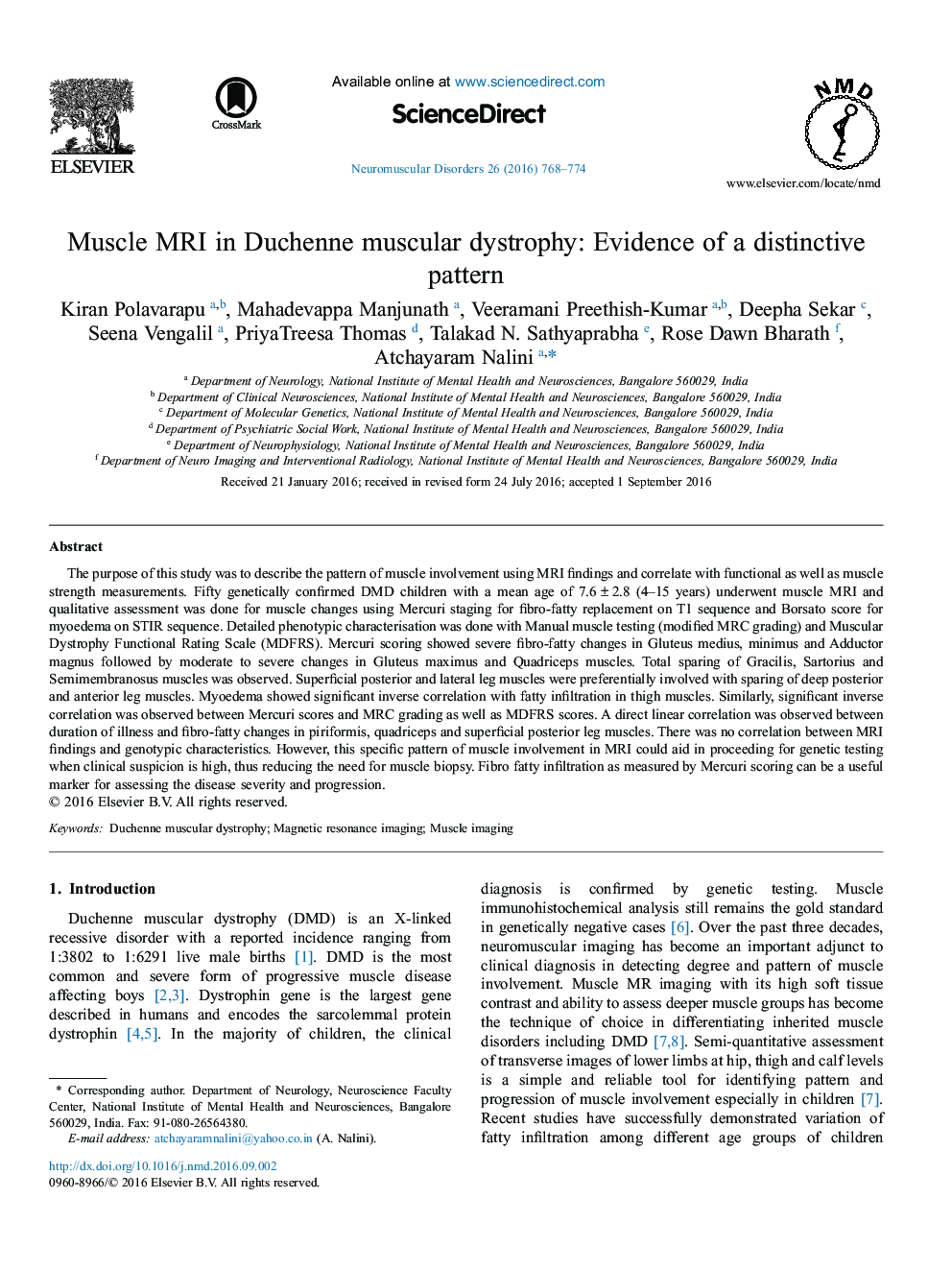| کد مقاله | کد نشریه | سال انتشار | مقاله انگلیسی | نسخه تمام متن |
|---|---|---|---|---|
| 5632226 | 1406530 | 2016 | 7 صفحه PDF | دانلود رایگان |

- Consistent pattern of muscle involvement on MRI of lower limbs in DMD.
- Gluteus medius, minimus and adductor magnus were severely affected at all stages.
- Fatty infiltration showed negative correlation with modified MRC grading.
- Fatty infiltration showed negative correlation with MDFRS scores.
- Myoedema and fatty infiltration showed inverse relation in thigh muscles.
The purpose of this study was to describe the pattern of muscle involvement using MRI findings and correlate with functional as well as muscle strength measurements. Fifty genetically confirmed DMD children with a mean age of 7.6â±â2.8 (4-15 years) underwent muscle MRI and qualitative assessment was done for muscle changes using Mercuri staging for fibro-fatty replacement on T1 sequence and Borsato score for myoedema on STIR sequence. Detailed phenotypic characterisation was done with Manual muscle testing (modified MRC grading) and Muscular Dystrophy Functional Rating Scale (MDFRS). Mercuri scoring showed severe fibro-fatty changes in Gluteus medius, minimus and Adductor magnus followed by moderate to severe changes in Gluteus maximus and Quadriceps muscles. Total sparing of Gracilis, Sartorius and Semimembranosus muscles was observed. Superficial posterior and lateral leg muscles were preferentially involved with sparing of deep posterior and anterior leg muscles. Myoedema showed significant inverse correlation with fatty infiltration in thigh muscles. Similarly, significant inverse correlation was observed between Mercuri scores and MRC grading as well as MDFRS scores. A direct linear correlation was observed between duration of illness and fibro-fatty changes in piriformis, quadriceps and superficial posterior leg muscles. There was no correlation between MRI findings and genotypic characteristics. However, this specific pattern of muscle involvement in MRI could aid in proceeding for genetic testing when clinical suspicion is high, thus reducing the need for muscle biopsy. Fibro fatty infiltration as measured by Mercuri scoring can be a useful marker for assessing the disease severity and progression.
Journal: Neuromuscular Disorders - Volume 26, Issue 11, November 2016, Pages 768-774